In the boomtown that never went bust, retirees face barriers accessing primary care
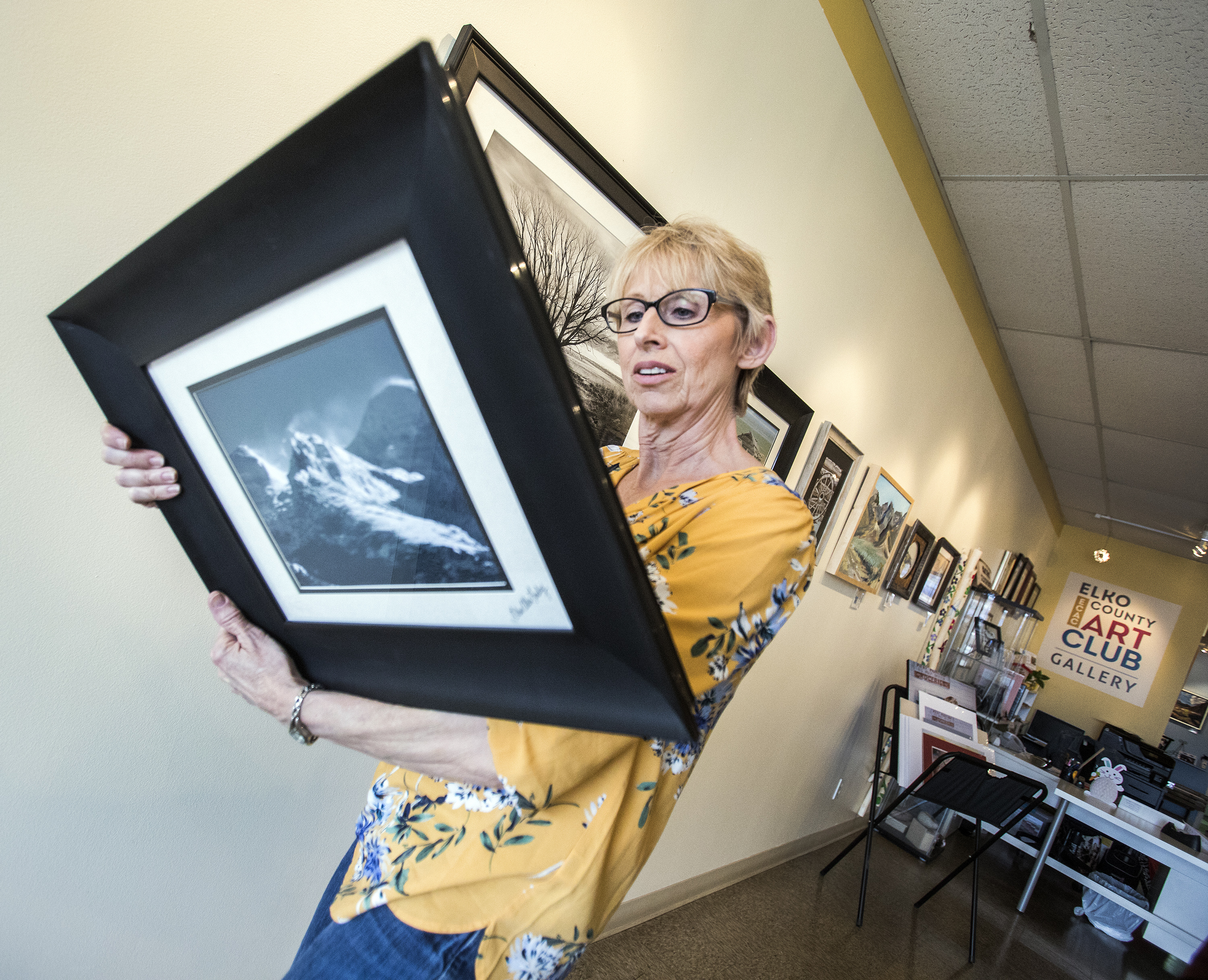
In a gallery in the heart of downtown Elko, artist Glen Finley gingerly lifts a frame from the wall, cradling it in her arms as she inspects the back.
Inside it is a print of one of Finley’s black and white photographs of the Ruby Mountains, powder whipping off of the snowy peaks. They are the same mountains Finley gazes at through the windows of her house in Spring Creek and the same mountains that cast shadows on the camps of the Donner Party and others as they traveled west in the days before Elko was a town or Nevada a state.
None of her art — from the photographs of the Rubies or of a rusted car decaying in a field to the watercolors of yellow leaves turning in fall or a wagon wheel leaning against a historic pine ranch house — would have existed if not for the cancer.
It was March of 2010 when doctors identified a small cyst in Finley’s breast during a routine mammogram. By August, it had doubled in size, and a biopsy came back positive for cancer. In the next seven months, she went through several rounds of chemotherapy, a double mastectomy and had several lymph nodes removed. The doctors wanted her to do radiation therapy, too, but after the double mastectomy, Finley said she felt like they had gotten rid of all the cancer.
Six years later during a routine follow-up appointment, Finley pointed out to her oncologist a lump on her chest that formed after one of her four pugs stepped on her too hard. A test revealed the lump was benign but that one of her lymph nodes was cancerous. This time, the doctors gave her a chemotherapy drug nicknamed the red devil for its bright red color.
Today, Finley is considered to be cancer-free. She’s able to spend her days framing artwork or collecting pieces to transport to a new gallery show. She even lends out her pieces to the hospital and the community health clinic in town.
But she worries about what will happen when her husband retires from the mines in the next year or so, and she and her husband lose their insurance. At 65, he’ll go on Medicare right away. At 60, Finley will have to wait a couple of years until she qualifies.
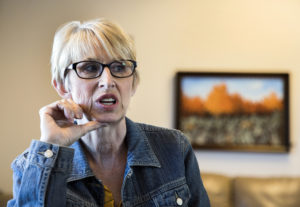
She’s not sure what she’ll do in the interim — she’s not thrilled about the prospect of purchasing insurance on the state exchange — but she’s already planning ahead for how to find a primary care doctor once she does qualify for Medicare. The clinic in town that she currently goes to is jointly run by Newmont Mining and Barrick Gold and exclusively provides care to miners and their families, not retirees.
“I don’t know. I’m just hoping that I can find something that’s going to bridge the gap and that my body is good, and it doesn’t do anything it’s not supposed to do,” Finley said. “I’m just, a lot of it’s, some of it is just luck. Some of it’s just luck. I don’t know.”
The consensus from residents and those involved in health care in Elko is that the number of primary care doctors who accept new Medicare patients is few and far between, which means much of the primary care for the city’s older residents falls to the community health center in town or the urgent care clinics. They say grandkids is usually the main reason a retiree will give when asked why they’re moving away, but ask a second or third question, and they’ll admit health care was a factor, too.
For a number of non-natives like Finley, who moved from Redding, CA in 2005 to join her husband who was working in the mines, Elko is now home. Her son is here. Her six-month and 18-month old grandchildren are here.
Elko is the boomtown that never went bust, where the mines have 100-year plans instead of 20-year ones, where the county’s population has nearly quadrupled since 1970 to about 52,000 and where people come to build a life — not just to work or pass through on the way to somewhere else — at the foot of the Ruby Mountains.
“I don’t really want to live somewhere else,” Finley said. “They’re the only grandkids I have, so I want to be here. I don’t want to have to move away because of health issues.”
A shortage of Medicare providers
Physician shortages aren’t just a problem in Elko, nor are they just a problem in Nevada. Studies have shown that the lack of doctors is a nationwide problem and that the U.S. will face a shortage of between 40,800 and 104,900 physicians by 2030.
But out of all 50 states, the problem is particularly acute in Nevada, and the problem is worse in the state’s rural and frontier counties. Nevada ranked 47th in the nation for active physicians, with about one doctor for every 500 residents, according to a 2017 report from the Association of American Colleges.
The state fares even worse when it come to primary care, ranking 48th with one primary care physician for every 1,426 residents. By comparison, the top performing state, Massachusetts, has one doctor for every 744 residents. And in Elko, there’s one primary care physician for every 2,492 residents, according to a recent community health assessment for the Elko County Health Board.
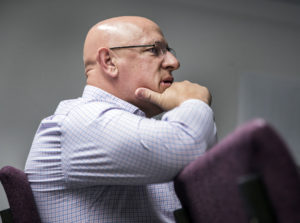
“Elko is a microcosm of every community in Nevada right now in which there’s a shortage of primary care,” said Gerald Ackerman, assistant dean for rural health programs and director of the office of rural health at the University of Nevada, Reno's School of Medicine.
Beyond the overall shortage, there’s an even smaller number of primary care providers in Elko willing to accept Medicare, the national, single-payer health insurance program for people 65 and older. In the community health assessment, the state Office for Health Assistance’s Elko ombudsman Jan Brizee said that in her experience fewer than 10 percent of providers in the area take Medicare. The assessment concluded that the lack of providers willing to take Medicaid, the state-run health insurance program for lower income individuals, and Medicare is the second most pressing issue facing the community, only behind the overall cost of medical care.
Beyond the reports and the facts and the figures, talk to the seniors in Elko, and if they aren’t struggling to find a primary care provider themselves, they know someone who has. At a senior center in Elko on a recent afternoon, three friends shared three very different experiences finding a primary care doctor.
Katie Vosburg, 72, considers herself one of the lucky ones. Although she worked for Newmont for 22 years, she never used the mining clinic, Golden Health Family Medical Center, and instead saw a primary care provider in town, Dr. Lynn Greenhouse, who agreed to keep her on after she retired in 2005. But Vosburg said most of her friends haven’t been as fortunate.
“They go to the clinic. They go to the hospital. They have several clinics now. What do you call them? Urgent care. They’ll go there,” Vosburg said. “But a lot of them go out of town. They go to Twin Falls, Salt Lake and Reno.”
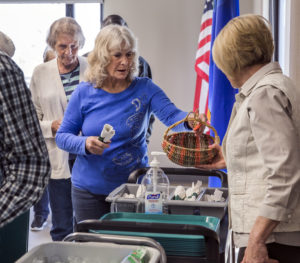
Vosburg’s friend, JoAnne Schuldies, said she used to see Greenhouse, too, but because she was never sick and didn’t go into the doctor’s office frequently, she was dropped as a patient. The 77-year-old used to go to Golden Health when she worked for Newmont as an equipment operator but now goes to the community health clinic run by Nevada Health Centers where she sees Sarah Lino, a family practice nurse practitioner.
And then there’s 89-year-old Kathryn Davis, who doesn’t have a primary care doctor but said she doesn’t worry about it. She said she’s tried once or twice before to find a doctor but eventually stopped looking. Now she only seeks out medical care when she needs a prescription refilled or has a serious medical need.
“One day we went to a concert and she took a flying leap and fell and broke her arm,” Vosburg said with a chuckle. “I hauled her to the hospital.”
Of the group, Vosburg is the most opinionated about being proactive with her health care.
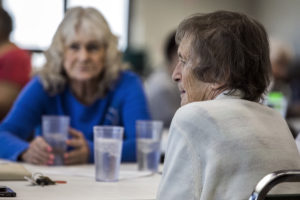
“You have to get your ducks in a row when you retire,” Vosburg said. “You can't mess around. A lot of people do. ‘Oh gee I don't have a doctor.’ Well why don't you have a doctor? You've lived here long enough.”
But the problem is that not everyone who wants a doctor is able to get one. Doctors are often reluctant to take on new Medicare patients because it doesn’t pay as well as private insurance. An analysis by CNN found that Medicare typically pays only about 80 percent what private insurance does.
“It’s all reimbursement. Medicare patients are more complex, have multiple problems, take longer to deal with,” said Dr. David Hogle, who runs the Elko Clinic and has been practicing in town for 38 years. “That’s all just part of demographics. But if the reimbursement was there, I don’t think people would necessarily object to that stuff.”
Hogle said that primary care providers turning away patients as soon as they go on Medicare is “extremely common” in Elko and that most doctors typically won’t see more than 20 percent Medicare patients. There was a day, he said, when miners would actually bring their grandparents along with them to move to Elko because of the health care.
“When Elko was the best small town in America 30 years ago, the strength of our health care was one of the reasons they’d go to work for the mines, and they’d bring their grandparents here to the small town because the health care was so good,” Hogle said. “We had a well-insured miner population, so lots of physicians had no trouble accepting the Medicare people, the parents along with the kids, and the kids were on good insurance, so sure we’ll see your grandfather.”
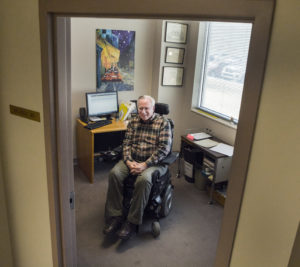
Some, like Hogle, believe that when the mines opened the Golden Health clinic in 1999, it siphoned off the well-insured miners, making it harder for the other doctors in town to make ends meet and balance the different kinds of insurance their patients had, be it private insurance, Medicare or Medicaid. But others, including the mines, note that the clinic initially opened because the miners had difficulty accessing health care locally and it was a barrier to getting workers to want to move to the area.
“I know the community blames the mines because they’ve gotten great health care, and then when they retire, they don’t have access to their family medicine clinic, but it’s no different than any other work clinic in the state,” Ackerman said.
When a group of residents formed a Medicare working group in 2015 to figure out how to bring more Medicare providers to Elko, one of the early ideas was to see whether the mining clinics would be willing to keep treating the retired miners on Medicare. Larry Hyslop, who organized the group, said that Newmont and Barrick came to some of their early meetings but told the group they didn’t have the capacity for the clinics to take on retirees.
“Talking to the people from the mines, there’s no way they’re going to do anything,” Hyslop said. “They built that clinic to save money. They’re not about to take on Medicare where they’re not going to make as much money.”
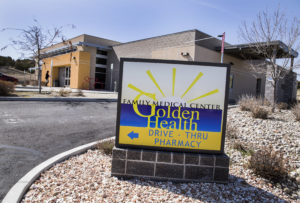
Both Barrick and Newmont confirmed that there have been no further discussions about the mining clinic taking on retired employees with Medicare since the 2015 working group meetings.
“Both Barrick and Newmont were actively involved in that Medicare working group. It was a community group that came together to talk about health care and Medicare and what could be done within the community. That was one of the many discussions that occurred during that time,” said Newmont spokeswoman Lisa Becker, whose father is a retired miner in Elko. “As much as we’d love to do that, there just isn’t capacity.”
Ackerman said that on one hand, the mining clinic does limit the number of patients with good paying insurance for the rest of the primary care providers in the community, but on the other, he understands that the mines are trying to control their overall health-care costs from a business perspective.
“You can see both sides. It’s a tough thing,” Ackerman said. “They have a great clinic, pharmacy, occupational health and the gamut, but it does put a strain on the other providers in the community and those outside.”
Plus, Ackerman noted there are also just more retired miners — and retirees in general — choosing to continue to live in Elko.
“The interesting thing about Elko is when I moved to Elko and you used to ask people where they were from, nobody ever said they were from Elko,” Ackerman said. “They said they were from Montana or Wyoming or Utah, and they’ve all been through three or four boom and bust cycles with mining. But the mines have been here for such a long time, they now say they’re from here and they want to retire here.”
Limited primary care options
For those who decide to retire in Elko and don’t have a primary care doctor, there are a few options in town. They can go to the Elko Clinic, where Dr. Hogle supervises internal medicine residents from Reno and takes Medicare; they can go to the Elko Family Medical and Dental Center run by Nevada Health Centers, which operates more than a dozen safety-net health clinics across the state; they can go to an urgent care; or they can go to the emergency room.
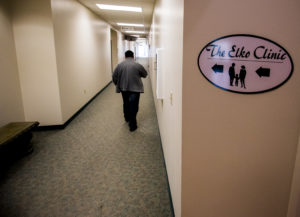
Hogle said he restructured his practice several years ago after suffering a T4 paraplegia that left him wheelchair bound. After his injury, he decided to continue to see anyone who was more than 80 years old, and also took on the responsibility of overseeing an internal medicine resident who could see Medicare patients. Hogle said residents typically rotate through the clinic for between two weeks to a month at a time and estimates about 80 percent of his caseload are Medicare patients.
“Nobody would do that as a business model, but it allowed us, meaning the clinic, to continue to see patients or offer a venue to see them,” Hogle said. “It’s not optimal care because you end up seeing a new person every time. But the records are in a single location, lab tests, results are in one spot. I’m the continuity in the sense that even if I don’t see those people, I supervise and review all the records.”
Then there’s the Elko Family Medical and Dental Center, which, as a federally qualified health center, receives funding from the federal government to take all patients whether they have private insurance, Medicare, Medicaid or no insurance. The clinic currently has five providers: an internal medicine doctor, a family practice physician’s assistant, a family practice nurse practitioner, an OB-GYN and a women’s health nurse practitioner.
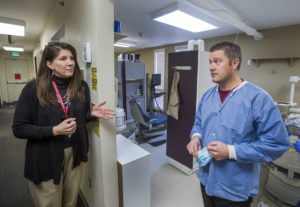
Clinic staff said that they are seeing an increasing number of Medicare patients and that, anecdotally, some of those are retired miners choosing to continue living in town. As of January, 25 percent of their patients were on Medicare, 40 percent were on Medicaid and 17 percent were on private insurance.
“It’s just them verbally telling us, ‘Oh, I just retired and we’re thankful to hear that you guys are accepting Medicare. We didn’t know where to go,’” said Ashley Leahy, practice manager at the clinic. “And those are miners that have worked at Newmont or Barrick for a very, very long time.”
Even though the clinic accepts all patients, sometimes it still takes time to get an appointment. The older patients who might have multiple chronic illnesses and are on dozens of medications typically see the clinic’s internal medicine doctor, Dr. John Tkach, but his waiting list is currently about six weeks long.
“The older we get, the more of us are getting shoved into where we need the Dr. Tkaches to give you those complex medications, when you’ve got gout and COPD and all these things, hypertension, all these things going on,” said Ackerman, who also chairs the Nevada Health Centers board of directors.
Medicare patients also often end up at the doors of one of the few urgent care clinics in town. Lori Ayala, owner of A+ Total Care, said that she actually decided to open her clinic in 2014 after working at the hospital and seeing patients come into the emergency room because they were unable to get in with a primary care doctor for relatively minor conditions.
“The reason (the clinic) was so successful in the very beginning is because the Medicare patients couldn't get into anybody here,” Ayala said. “Nevada Health Centers, they were really the only one that was taking Medicare.”
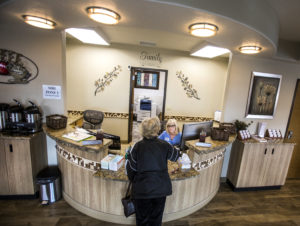
The urgent care clinic currently has two full-time providers, a physician and a physician’s assistant, and has another physician’s assistant that comes to fill in for the other two. Medicare patients currently make up about 15 to 20 percent of the clinic’s caseload, Ayala said.
“Usually they're coming in for more acute care and then it's, ‘Oh by the way I've got this this and this that's not being taken care of,’ so let's refill those meds or whatever it is,” Ayala said. “Usually when they come in, they're coming in for the flu, cold or bronchitis.”
Medical residents come to Elko
Residents and those in the medical community generally agree that there are more options for Medicare patients than there were a couple of years ago. And though there are those like Ayala who have found a way to run a business while providing care for Medicare patients, much of the burden of providing care to those on Medicare and Medicaid falls on federally-funded nonprofits like Nevada Health Centers and, soon, on medical residents when other providers aren’t available.
“It used to be that you viewed medicine as … it wasn’t a profession, it was a personality. It was who you were. It was kind of like being, you know, it was a physician, it was a priest, it was that kind of thing, whereas now it really has become more of a profession,” said Dr. Arthur Islas, a professor at the University of Nevada, Reno School of Medicine. “It is now a job, and I think that change in the medical culture was a needed change, but at the same time, you’re losing people who were passionate. That sort of built-in ingrained passion for my community is harder to find.”
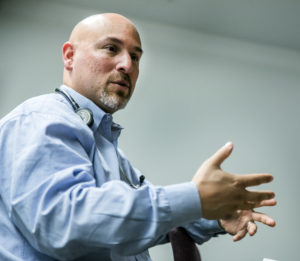
Islas is one of the doctors out on rotation from the university to help set up a new residency program at the Nevada Health Centers clinic. The program, funded by a $1.4 million grant from the state, will bring two full-time doctors to Elko to oversee the residency program, with two residents the first year and four residents each year after that.
Renovations on an old section of the building where the Nevada Health Centers clinic is housed began in February. Once completed, the clinic will more than double in size to house the additional two doctors and four residents.
The residents will complete their first year of the program in Reno, doing rounds in the hospital and rotations with different specialists, and then spend their next two years out at the clinic. They won’t be able to see as many patients as a full-fledged doctor would, but clinic staff estimate that the residents will be able to work the equivalent of about two or two and a half full days a week seeing patients.
The program will officially launch on July 1, although Islas and other physicians with the medical school are already rotating through the clinic and residents will soon start coming through on a rural track as well before the permanent residents arrive. Islas said they started early to “test drive” the residency program to make sure everything is set before the summer.
“[The rotating residents] already have a basic background. They’re a little more savvy on things, and then by the time the actual residents that will be here, the Elko residents, they will actually be a little more smooth,” Islas said. “Things will kind of fall into place.”
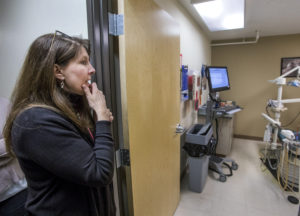
The $1.4 million grant will pay for both renovations to the clinic to create the extra space for the residency program and also for the supervising physicians who will oversee the residents. The goal, Islas said, is to graduate residents who then want to stay and provide health care in Elko.
“And I think the generation that we had of physicians that really wanted to do that has sort of faded and I think it’s a sort of changing of the times,” Islas said. “It become harder and harder to recruit to rural placements.”
That, coupled with the lower reimbursement rates for primary care doctors and the hundreds of thousands of dollars of debt that doctors graduate with, makes it particularly hard to recruit primary care doctors to the rurals, Islas said. But the hope is that with three medical schools now in Nevada — University of Nevada, Reno in the north and UNLV and Touro University in the south — additional residency slots will allow Nevada-educated doctors to complete their training in state and practice in state, too, he added.
Nevada retains about 34.6 percent of physicians who attend medical school in the state, while it keeps about 54 percent of those who complete a residency in state, the 8th highest rate in the nation, according to the Association of American Medical Colleges.
“The idea is that if I recruit a Nevada girl and she’s went to UNR or UNLV, went to medical school in Nevada, and her family is from Nevada, the chances that she’ll end up staying in Nevada is pretty good if I can keep her,” Islas said.
There’s a similar rural residency program currently operating in Winnemucca, which is about to graduate its second class. Those residents do their first year in Las Vegas and then complete their last two years at the family medicine clinic at Humboldt General Hospital in Winnemucca, with four residents in the program at any given point in time.
The additional difficulty now, Ackerman said, is that residents are actively being recruited while in their residency programs and offered a stipend in exchange for committing to move after the residency. He said that two of the residents in Winnemucca last year were contacted by Carson City and a community in Oregon.
The medical school is also still in the process of hiring the two full-time physicians who will oversee the Elko residents. Even if the hires were finalized tomorrow, Ackerman said, it would probably still take until August or September to get the doctors licensed by the state and credentialed by the insurance companies, as well as Medicare and Medicaid. In the meantime, medical school faculty will rotate out to Elko to support the program.
There’s a significant amount of hope among those in the community that the new residency program will mitigate at least some of the issues with access to primary care that Medicare patients face. For his part, Dr. Fred Fricke, a gastroenterologist in Elko who participated in the Medicare working group, thinks that there could be a point in the future when Nevada is producing too many doctors.
“My personal view is I think we’re going to find out if the thing with the new urgent cares and the University of Nevada makes a difference,” Fricke said. “We’re sort of in a waiting mode to see what happens. We’ll know more after this first group of efforts has been tried.”
Finley is hopeful about the new residency program, too, and that some of the residents will decide to stay in the community and practice in Elko. But until then, she’s not sitting idly by, which is why she decided to join the Medicare working group.
“I just started thinking I wasn’t a senior yet. I’m not going to be for five more years. I’m not in a hurry to get there. But, someone needs to step up and have a voice for these people,” Finley said. “My husband’s a senior, even though he doesn’t want to admit it. But, somebody’s got to be a voice for that, and I’ve worked in the medical field. It’s not foreign to me, so it’s like I can do this.”
Before she moved to Elko, she worked at a lab in Redding for 26 years as a histology technician, preparing tissue slices for examination. She said it was “awful” facing breast cancer herself after years of preparing and staining breast tissue professionally. But because of that, Finley said she probably has more “gumption” about staying on top of her health care than most people do, which is why she’s already thinking about trying to find a primary care doctor in Elko.
“Most people don’t have a clue that you need to be your own best advocate, and step up to that and ask questions all the time,” Finley said. “If that means being a pain in the butt, then be a pain in the butt. You just, you have to. You have to. It’s your life.”
